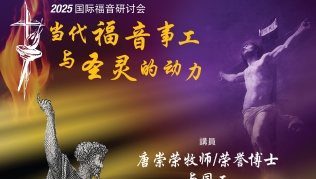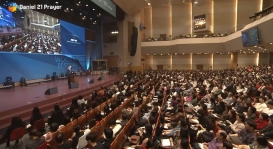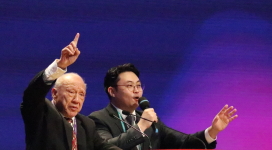
The burial place of Jesus in the Old City of Jerusalem was opened for the first time in centuries, and researchers only had 60 hours to examine it.
The stone slab believed to be where Jesus' body was laid to rest was uncovered by workers doing restoration work in the Church of the Holy Sepulchre in Israel to give way for three days of archaeological analysis.
According to National Geographic, the Edicule, which was built over the tomb to protect it from visitors and tourists, was undergoing restoration partly because of water damage.
The tomb has never been photographed or even drawn by an artist before, and on the evening of Oct. 26, people were able to gaze on it for the first time in 200 years.
"The marble covering of the tomb has been pulled back, and we were surprised by the amount of fill material beneath it," Fredrik Hiebert, archaeologist-in-residence at the National Geographic Society, said. "It will be a long scientific analysis, but we will finally be able to see the original rock surface on which, according to tradition, the body of Christ was laid."
As researchers continued investigating the site, they found another marble slab with a cross carved on it. Further examination revealed that the original burial bed carved from limestone was still intact. Even the cave walls, also carved from limestone, were still existing.
According to the gospels, Jesus was buried in a rock-cut tomb owned by a wealthy man named Joseph of Arimathea, who was a disciple of Jesus. Based on tradition, the wealthy families during that time owned burial chambers with "beds" cut from the rock where the body of the dead was placed.
"All of this is perfectly consistent with what we know about how wealthy Jews disposed of their dead in the time of Jesus," archaeologist Jodi Magness said in another report from the National Geographic. "This does not, of course, prove that the event was historical. But what it does suggest is that whatever the sources were for the gospel accounts, they were familiar with this tradition and these burial customs."
Archaeologist Martin Biddle suggests checking for traces of graffiti on the burial rock. With at least half a dozen other tombs similar to it, examining for graffiti is a crucial step to confirming if it was really where Jesus was lain after he died on the cross, he explained.
"We know that there are at least half a dozen other rock-cut tombs below various parts of the church," Biddle said. "So why did Bishop Eusebius identify this tomb as the tomb of Christ? He doesn't say, and we don't know. I don't myself think Eusebius got it wrong-he was a very good scholar-so there probably is evidence if only it is looked for."
After 60 hours of examination, the "holy bed" was resealed in marble cladding, and the restoration of the Edicule was resumed in order to preserve the site for future pilgrims.
The restoration work is expected to be finished in time for Easter next year, according to AFP.







![[Exclusive Interview] Evangelist Stephen Tong exhorts the Chinese church to return to the foundations of reformed faith](https://www.gospelherald.com/media/cache/thumbnail/7/23/72340sp_273w_150h_1x_1y.png)